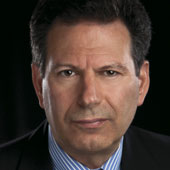The Indian Ocean and the Future of U.S. Power
How will the global power base shift from the West to the Indian Ocean in the 21st century?
October 30, 2010
The map of Europe defined the 20th century: From Flanders Fields to Omaha Beach to the Berlin Wall to the burned villages of Kosovo — and from the Long European War, lasting from 1914 to 1989, to its bloody aftershocks — Europe was the center of world history.
Momentous trends and events happened elsewhere, to be sure. But great power politics, from the collapse of Old World empires to the bipolar struggle between the United States and the Soviet Union, had more to do with Europe than anywhere else.
The Greater Indian Ocean, stretching eastward from the Horn of Africa past the Arabian Peninsula, the Iranian plateau and the Indian Subcontinent, all the way to the Indonesian archipelago and beyond, may comprise a map as iconic to the new century as Europe was to the last one. Hopefully, the 21st century will not be as violent as the 20th, but — to a similar degree — it could have a recognizable geography.
In this rimland of Eurasia — the maritime oikoumene of the medieval Muslim world that was never far from China's gaze — we can locate the tense dialogue between Western and Islamic civilizations, the ganglia of global energy routes and the quiet, seemingly inexorable rise of India and China over land and sea.
For the sum-total effect of U.S. preoccupation with Iraq and Afghanistan has been to fast-forward the arrival of the Asian Century, not only in the economic terms that we all know about, but in military terms as well.
Recently, messy land wars have obscured for us the importance of seas and coastlines, across which most trade is conducted and along which most of humanity lives — and where, consequently, future military and economic activity is likely to take place as in the past.
It is in the littorals where global issues such as population growth, climate change, sea level rises, shortages of fresh water and extremist politics — the last of which is affected by all the other factors — acquire a vivid geographical face.
What the late British historian C. R. Boxer called Monsoon Asia, at the crossroads of the Indian Ocean and the western Pacific, will demographically and strategically be a hub of the 21st-century world.
Half a millennium ago, Vasco da Gama braved storm and scurvy to round Africa and cross the Indian Ocean to the Subcontinent.
Da Gama's arrival in India initiated the rise of the West in Asia. Portuguese seaborne dominance eventually gave way to that of other Western powers — Holland, France, Great Britain and the United States, in their turn.
Now, as China and India compete for ports and access routes along the southern Eurasian rimland — and with the future strength of the U.S. Navy uncertain, because of America's own economic travails and the diversionary cost of its land wars — it is possible that the 500-year chapter of Western preponderance is slowly beginning to close.
This gradual power shift could not come at a more turbulent time for the lands bordering the Indian Ocean's two halves, the Arabian Sea and the Bay of Bengal. At the top of the Arabian Sea is Pakistan, and at the top of the Bay of Bengal is Burma, both highly volatile and populous pivot states. Analysts normally don't put those two countries in the same category, but they should.
Then, of course, there is the whole political future of the Islamic world from Somalia to Indonesia to consider. Besides their proximity to the Indian Ocean, so many of these places are characterized by weak institutions, tottering infrastructures and young and restive populations tempted by extremism. Yet they are the future, much more than the graying populations of the West.
The Indian Ocean region is more than just a stimulating geography. It is an idea because it provides an insightful visual impression of Islam, and combines the centrality of Islam with global energy politics and the importance of world navies, in order to show us a multi-layered, multipolar world above and beyond the headlines in Iraq and Afghanistan.
It is also an idea because it allows us to see the world whole, within a very new and yet very old framework, complete with its own traditions and characteristics, without having to drift into bland nostrums about globalization.
Editor's Note: This essay is an excerpt from Robert Kaplan's "Monsoon," published by Random House on October 19, 2010. Copyright 2010 Robert Kaplan. Reprinted with permission of the publisher.
Takeaways
The effect of U.S. preoccupation with Iraq and Afghanistan has been to fast-forward the arrival of the Asian Century.
It is possible that the 500-year chapter of Western preponderance is slowly beginning to close.
The Indian Ocean region shows us a multi-layered, multipolar world of Islam above and beyond the headlines in Iraq and Afghanistan.
Read previous
I Cry For You, Argentina
October 29, 2010
